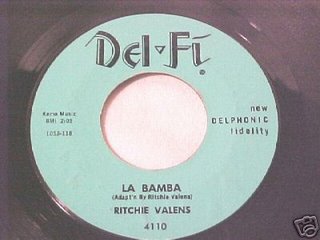 I gave in. After years of resisting the personal jukebox, I finally went and got myself a monstrous 60 Gig Ipod and a 4 GB Nano for Mrs. DJStan to take to the beach when we go “down the shore”, as those quaint folks in New Jersey say. Why resist? Who knows? I’m a techie by both nature and profession, and they’re very elegant little machines, with a pretty smart interface, decent management software, and easy access to an overpriced (a tale for another time) but seductive music store. OTOH, I have over 1000 CD’s (and let’s not talk about the leaning tower of vinyl) and, I suppose, a serious fetish thing going – I like the feel of the jewel box, the cover art, the liner notes (yes, I read them – did I mention I’m also a compulsive reader?). I like the way the shelves of CD’s look, and the way anyone who visits can get a good idea of at least part of my psyche just by browsing the shelves.
I gave in. After years of resisting the personal jukebox, I finally went and got myself a monstrous 60 Gig Ipod and a 4 GB Nano for Mrs. DJStan to take to the beach when we go “down the shore”, as those quaint folks in New Jersey say. Why resist? Who knows? I’m a techie by both nature and profession, and they’re very elegant little machines, with a pretty smart interface, decent management software, and easy access to an overpriced (a tale for another time) but seductive music store. OTOH, I have over 1000 CD’s (and let’s not talk about the leaning tower of vinyl) and, I suppose, a serious fetish thing going – I like the feel of the jewel box, the cover art, the liner notes (yes, I read them – did I mention I’m also a compulsive reader?). I like the way the shelves of CD’s look, and the way anyone who visits can get a good idea of at least part of my psyche just by browsing the shelves. There’s something highly abstracted about a cigarette pack sized player that can hold most of my library in slightly lossy digital bits (and the sound quality is actually fine, compared to other portable music devices) that put me off. That and the Steve Jobs thing. I’ve never been a fan, although I recognize the guy’s talent (though Wozniak really invented the Apple box in the first place). The Apple world has always had a kind of smug, elitist attitude that I find repellant; that and the fact that their boxes were always sealed worlds, designed to isolate the user from the technology – I like hacking away at things.
But others have been persuasive. My son, who has inherited and expanded on my love of music, delights in his Ipod, and has often commended it to me. Then on our recent trip to Morocco and Algeria, my daughter and son-in-law brought their Nanos with them, and I did some serious playing around with the interface for the first time. I liked it. And there's my drummer work friend, who's has been on my case to get one for a long time (and note that his band, Mr. Neutron, has a new disc out – it’s name is “Red Triangle”, it’s surf/Bond/spaghetti western type instrumentals, it’s a gas, and you can check it out here) and so I did it. I feel slightly soiled, but it will pass. Meanwhile, no doubt about it: the Ipod is a cool thing (despite the ear buds, which I don’t use on the general principle that putting things in your ears is not a good thing; over the ear headphones are my definite preference).
Having it is one thing; loading it up is another. I've started putting my music on the Pod, and while it's a relatively simple process, it takes time. I'm trying to do a set per night – last night I loaded all my Miles Davis and Charlie Parker discs. I've already loaded Steve Earle, Bob Dylan, Randy Newman, a whole lot of 50's Doo-wop, Tom Waits, and all the CD's I loaded for Mrs. DJStan's Nano which she took to the beach (Annie Lennox, Dixie Chicks, k.d. Lang, Willie Nelson, Shirelles, Aretha, B.B. King, etc.). I've loaded 186 CD’s as I’m writing this and I’ve still got many shelves to go. I’m also doing this more haphazardly than I had expected. Suddenly I'll need to put Dave Carter & Tracy Grammer on, or I'll decide that the next thing I have to listen to at work is Los Lobos or David Lindley or Elizabeth Cotten.
Then there's the playlists, both smart and dumb. The dumb ones are the classic type – select a bunch of songs and the order in which you want to hear them, give the list a name, and done. The "smart" playlists let you set criteria for selecting songs – artist, composer, length, genre, etc. - and then does a dynamic selection that meets them (you can limit the number of matches). I've got a lot of Dylan, for example, so I've set up a playlist called "Random Bob" that pulls 30 cuts of songs where either the artist or the composer is "Bob Dylan" (this way I get some covers in there, which I also like). You have to do some editing to make everything work as you wish (for example, if the composer is "Dylan, Bob", it won't match), but for a compulsive analytic type like myself, that's fun!
And shuffle – a neat, but limited idea. It's cool getting a truly random selection of tracks from the entire library, but as I add more jazz and classical, it would be nice to be able to set some boundaries, especially on track length. Getting the 3rd movement of Beethoven's 7th symphony sandwiched right after a Motown track, followed by 18 minutes of Miles' "Shhh/Peaceful" from "In a Silent Way" doesn't quite work – not even for me. It would also be nice if Apple extended the Shuffle option so that you could apply it to an Album, an Artist, a Genre, etc. – rather than only having the option of applying it to ALL songs or ALL albums. Ah well – there are always creative playlist options, I suppose.
Meanwhile, I’ve accepted the fact that I caved and no longer have the strength of ten. Such is life – a series of trade-offs. I’ve got to go now, though. I’ve got CD’s to load and playlists to fiddle with …and in my head, I can hear the voices of the other Pod people chanting softly, “One of us, one of us….”.
In the words of Robert Palmer, it’s simply irresistible.








